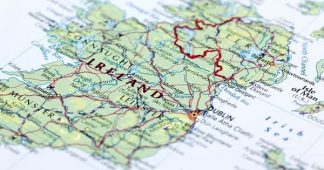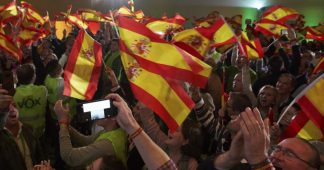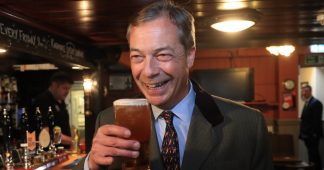Labour will lead new government with a clear mandate for change.
By Ellen Engelstad
16 Sep 2021
In Norway’s parliamentary election on Monday, 13 September 2021, the country took a significant leftward turn, with candidates on the left of the political spectrum securing 100 out of a total of 169 seats in the parliament. It is unclear who will form a government, but it will likely be a majority coalition bringing together the Labour Party (Ap), the Centre Party (Sp) and the Socialist Left Party (SV), or a minority coalition made up of just the first two of these parties. Alternatively, Labour could form a minority government on its own, with support from the left, i.e. similar to the situation in Denmark.
The biggest takeaway is the breakthrough of the radical-left Red Party (R), which became the first newly-established party in Norwegian history to pass the 4‑percent threshold required to ensure parliamentary representation. The Labour Party bounced back from polling poorly in the spring to cement its position as Norway’s largest party, although its share of the vote was one percentage point lower than in the previous election four years earlier. The Centre Party, which ran a campaign opposing unpopular centralising reforms, enjoyed the biggest increase in vote share. The Socialist Left Party also had a good campaign, boosting its support by 1.6 percentage points. While less than the leading opinion polls predicted, this was nevertheless a decent result, especially considering the competition from the Red Party and the Green Party (MDG), given that these three parties are fishing for votes in much the same pond. All three tend to appeal more to voters from the young, urban middle class. Within this electorate, income levels and job sectors are eventually significant for the decision to vote – from higher incomes (MDG) to middle incomes (SV) to lower incomes (R).
For the last eight years, from 2013 to 2021, Norway has been ruled by a coalition of four right-wing parties. Although the exact makeup of the government has varied in that time, the large right-wing parties being the Conservative Party (H) and the anti-migration far-right Progress Party (FrP), and the small ones being the Christian Democratic Party (KrF) and the Liberal Party (V). These last two, like the Centre Party, have tried to frame themselves as parties of the political centre, belonging to neither the left nor the right. Recently, however, they have increasingly been forced to choose one side or the other in order to wield influence in the Norwegian government. The Green Party has also previously insisted that it does not belong to one political side, but in this election the Greens indicated that the Labour leader was their preferred prime minister, claiming that the right-wing government had done little to curb Norway’s greenhouse-gas emissions or protect the environment.
Thus, the leftist political bloc consists of five parties: three big parties (Ap, Sp and SV), who are likely to form the new government, and two small ones (R and MDG). However, when the results came in on what was a nail-biting election night on 13 September, the political drama wound up with the left and the right cancelling each other out, with the Red Party and the Liberal Party emerging above the threshold, securing eight seats each, while the Green Party (from the left) and the Christian Democratic Party (from the right) coming out below it, thereby only racking up three apiece.
Rural uprising
That Norway would move to the left in this election had been expected for quite some time. The right-wing government had grown increasingly unpopular, being criticised for reducing taxes for the rich while making cuts to welfare and the public sector. A major reform brought the number of counties in Norway down from 19 to 11, as well as cutting the number of municipalities. It was claimed that this reform would make local government more effective and robust, but sparked such outrage that the number of counties might now be increased again, as the Centre Party has pledged to dissolve all the forced mergers between these entities.
The protests are associated with a broader dissatisfaction among people in the countryside, and the conflict between urban centres and the periphery (i.e. the rest of the country) was one of the main themes of the election. Norway covers a vast geographical area but only has around five million citizens. Therefore, a trend towards centralisation and people moving to major cities is a matter that is taken seriously by a majority of the population and is seen as a sign that the country is losing something significant. However, this trend is persistent, and concerns about, above all, hospitals and police stations in Norwegian districts have led to fierce opposition. One social movement that emerged in recent years is the bunad guerilla, a group of women wearing traditional folk costume (bunad) who protested against districts’ birth clinics being shut down, causing women to have to make long journeys to give birth. In Oslo, there have also been significant demonstrations against the right’s plan to close down the city’s largest hospital and replace it with a new one that many fear is too small for the capital’s population.
The rise of the periphery led to a surge in support for the Centre Party, which, more than any of its rivals, has channelled this dissatisfaction. At the start of 2021 their polling figures were on a par with the Labour Party at around 20 percent, with many voters coming over from the right. However, having picked up such large number of dissatisfied voters from the right and centre, the party started distancing itself from the left, claiming they did not want to rule with the Socialist Left Party (as they had done between 2005 and 2013) and picking a fight with the Green Party over flagship climate policies. They therefore seemed to try to broaden their appeal too much, given that many of the party’s voters felt an overall dissatisfaction with the right-wing government and wanted real change. In the end, the Centre Party accounted for 13.5 percent of the vote, putting forward development in rural areas as one of its key demands – a vision also shared by Labour and the left at large.
Climate change sinking in?
Another major issue in the campaign was climate change, given that Norway is such a big exporter of oil and gas. The debate intensified after the United Nations published its new climate report on 9 August and UN Secretary-General Antonio Guterres declared “code red” for humanity. There is a growing consensus that what is sometimes called the “Norwegian oil fairy tale” will soon be over, although opinions differ on whether this will be prompted by a planned transition with the country stopping drilling for oil, or by a rapid drop in demand on the markets. Four parties were considered “climate parties” (SV, R, MDG and V), and the climate issue probably explains how the Liberal Party managed to pass the threshold.
However, the fact that the Green Party did not manage to reach the threshold led to a debate about the climate being of less importance to voters than the picture painted in the media. Critics claim that this shows that, given their relative wealth and high standards of living, Norwegians are unwilling to face up to the climate reality and give up some of the comforts and conveniences of modern life. Others will say that the Green Party was too radical and uncompromising, giving too much of an impression of being overly “urban middle class” and adopting a “holier than thou” attitude that scared many voters away. All parties except the far right also assert that they care about climate change and the environment, and so it could be that voters who set store by such issues opted for parties other than the Greens, especially the two on the hard left. The Socialist Left Party and the Red Party also raised climate change in their campaigns, arguing for green industries and a just transition that makes the biggest polluters pay the highest price. At the other end of the political spectrum, the far-right FrP tried to make the case for Norwegian oil production and to reach out to workers who were afraid of losing their jobs – and to not much avail, as their share of the vote continued on its downward trend from the previous election, falling to 11.6 percent.
Two radical left parties – or one?
Over the last couple of years there has been some talk about some electoral collaboration – even a merger – between, the Socialist Left Party and the Red Party, both of them belonging to the hard left. The Workers Communist Party (AKP) and the Red Election Alliance (RV) were brought together, teaming up with AKP’s youth party Red Youth (RU) and independents, to establish the Red Party in 2007. In fact, RV had originally been the electoral face of AKP, but it had been operating as an independent party since 1991.
At that time the Socialist Left Party had been a junior partner in a government with Labour and the Centre Party for two years. Many on the left were disappointed with what a government that seemed to be continuing with neoliberal reforms and was refusing to raise taxes for the rich. It also opened up the Barents Sea to oil and gas drilling and later joined the NATO-led war in Libya. After eight years in government, SV was punished by its voters in 2013 and limped over the threshold with 4.1 percent. After that, the party made a significant swerve to the left under its new leader, Audun Lysbakken, and slowly rebuilt the confidence of its electoral base. However, this leftward turn also meant that the two hard-left parties ended up increasingly voting the same way in Parliament and agreeing on most issues, leading to a greater clamour for closer collaboration. However, this did not materialise in the September 2021 election, which might have actually been for the best because such collaboration, as well as potentially sending a signal to voters that the parties were ready to forge a strong Norwegian leftist bloc targeting power, could have scared some voters away, as the two parties attract rather different electorates. The Red Party, for example, is still shunned by some because of its communist past – an attitude that is, however, more prevalent among the older generations.
More significant, though, is perhaps the fact that the Socialist Left Party is reaching out in particular to women in the public sector, such as teachers and healthcare workers, while the Red Party has pursued its long-term strategy of putting labour and the economy at the heart of its politics. That has made it possible to pick up dissatisfied voters from Labour and increased their vote among those on low incomes and having less high levels of education. The Socialist Left Party is also interested in joining a government and having its own ministers, thus appealing to voters who would like to see their party taking up positions of responsibility, while the Red Party, based on its level of support, has no desire to enter government. Instead, they prefer pushing for radical reforms from the parliamentary backbenches, thereby possibly appealing to other voters, i.e. those who do not want to see their party’s radicalism “compromised away”.
The stakes are high
The election in Norway provides a clear mandate from voters for a move to the left, away from centralisation, inequality and cuts in welfare and subsidies, and for the political parties to deliver on social reforms. One reform that the left raised in the campaign was free-of-charge dental care, as this currently falls outside the free public healthcare system. There were also demands for new infrastructure across the country (demonstrated, for instance, by parliamentary representation being secured by a list of candidates demanding a hospital in the town of Alta in the far north of the country), tax rises for the rich, and state aid being provided for the development of new, green industries. The Labour Party has also shifted decisively to the left, at least compared with its neoliberal heyday 20 years ago – and indeed they would definitely not have polled so well in this election if they had not done so.
The question remains how significant their move to the left really is, and if they can deliver on the huge expectations pinned on them after eight years of right-wing rule and growing dissent. One concern is that the right wing always cut taxes for the rich and the Labour Party is reluctant to put them up again. The party has said that it will increase some taxes and levies, while at the same time cutting others, leaving overall tax revenues at their current levels. This is a worry as social reforms and a stronger welfare state cost money and need to be financed in some way, with the Socialist Left Party and the Red Party arguing that the funding should come from those with the broadest shoulders.
Another cause for concern is the Centre Party, which not only has many astute policies for workers and the districts but also a significant number of members with more right-wing tendencies. The biggest challenge for this party may be its resistance to doing much about climate change. Its deputy leader, Ola Borten Moe, has invested the equivalent of over a million US dollars in oil companies, and the party is opposed to levies on emissions on the pretext that this would disproportionally hit those in rural areas who depend on their cars to travel long distances. This is of course true for flat fees, but it could be resolved with mechanisms such as a “carbon fee and dividend” system. The Centre Party is also the traditional party of landowners, and tends to oppose environmental regulations on land use and wants to eradicate predatory mammals like wolves – something which the left finds the unpalatable.
All in all, the election represents a huge opportunity for the left, if of course they can manage to seize it. That the radical left has become such a force and that the Red Party has a significant grouping in Parliament that is ready and waiting to pick up disgruntled voters if the government fails to deliver, provides reason for real hope. Expectations are high, which means that there may be a heavy price to pay if Labour does not manage to grasp this chance. The far right had little to say in a campaign where immigration was off the agenda and class politics played a dominant role. Let’s hope it stays that way.
Originally published at the website of the Rosa-Luxemburg-Stiftung (full version)
Published at www.transform-network.net
We remind our readers that publication of articles on our site does not mean that we agree with what is written. Our policy is to publish anything which we consider of interest, so as to assist our readers in forming their opinions. Sometimes we even publish articles with which we totally disagree, since we believe it is important for our readers to be informed on as wide a spectrum of views as possible.











